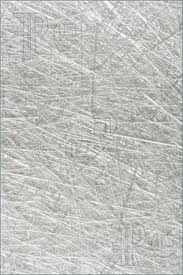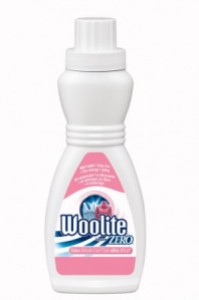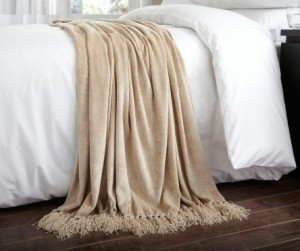Olfactory bipolarity, a perfume holding you hostage with assault weapons, Michelle Pfeiffer in “Married to the Mob,” 80s big hair, prepubescent girls, Pantene, and generic facelessness that “is not worthy of the Lutens name” — you better hold on, because this is going to be a bumpy ride. All those disparate things (and more) are reactions to Serge Lutens’ Nuit de Cellophane, and not just from me, either. This is a perfume that gave me olfactory whiplash, and whose opening almost verged on the oppressive. It takes a lot to make me cower, but I would have whimpered like a child, were it not for an extreme shift due to the aforementioned bipolarity.

Source: Fragrantica.
Nuit de Cellophane is an eau de parfum that was created with Lutens’ favorite perfumer, Christopher Sheldrake, and released in 2009. On his website, Lutens describes the perfume as follows:
When, beneath its cellophane, Haute Couture was but yet an idea.
Are you familiar with the scent of osmanthus? The flower is white or tinged with orange.
From the tight clusters of its petals bursts the scent of jasmine laced with mandarin orange.
On hot summer days, it provides a breath of fresh air.
According to Luckyscent, the notes seem to consist of, at a minimum:
Green note, fruity note, jasmine, osmanthus, carnation, lily, muscs, almond, wood, honey.
I first smelled Nuit de Cellophane on a paper strip in Paris at a Sephora boutique, and I really liked its plummy sweetness. It seemed heady, and like a very opulent fruity-floral. On skin, though…. Oh God. Oh God. Nuit de Cellophane opens with the aforementioned plums, followed by something akin to mandarins, and apricots. Seconds later, a metallic, dewy blast of white lilies arrives on the scene, accompanied by the fiery bite of red carnations and something that smells distinctly like a big, fat, white peony rose.

White Peony. Photo: Will Borden on Fine Art America. (Website link embedded within photo.)
It’s a visual of heavily petaled, loud whiteness tinged with vermillion, as if blood were dripping from a long, taloned nail onto snowy flowers. There is a subtle greenness to the scent, along with a concentrated bitter-sweet almond, but neither element is strong enough to cut through the intense florals. The whole thing is encased in fleshy orange, from pulpy, sticky mandarin oranges to a vaguely nutty apricot-peach. All of it feels extremely loud, and a thousand times more vulgar than anything that I’ve tried thus far from Serge Lutens. Part of me likes its unbelievably concentrated forcefulness, while the rest of me feels a little stunned at the assault.

Source: Wallcoo.net
Five minutes in, a very metallic, synthetic element arises, making me wonder if Nuit de Cellophane was, in fact, the first in Serge Lutens’ recent line of quasi-metallic florals. Here, the note smells simultaneously soapy, clean, like hairspray, and like shampoo, all in one. It lingers around the lily aroma that is increasingly overtaking Nuit de Cellophane and becoming the main note. I love white lilies, but the version here is really quite something else. It is over-the-top in its sweetness on my skin, more dense and syrupy than even Lutens‘ Un Lys. At the same time, though, it also has a cool, synthetic steeliness and hairspray quality underlying it, something that wasn’t apparent in its lily sibling.

Michelle Pfeiffer in “Married to the Mob.” Movie still from Listal.com.
Something about the overall combination continually makes me imagine a very big-haired, vulgar woman, like Michelle Pfeiffer’s character in the film, “Married to the Mob.” (It’s a hilarious film, by the way.) The connection in my mind stems from Nuit de Cellophane’s hyper-femininity, blowsiness, excess, loudness, and sweetness, with a very tough-as-nails swagger. And did I mention “big hair”? That too, especially as the floral hairspray element in Nuit de Cellophane keeps growing in volume. I do like Nuit de Cellophane a bit more than that description may sound, but not by much. And certainly not for long.
The perfume just keeps becoming sweeter and more shampoo-like on my skin with every passing minute. I realize my skin amplifies both sweetness and synthetics, but this experience leaves me feel utterly overwhelmed. That’s pretty unusual for someone who likes such forceful, powerful scents as Amouage‘s Ubar, Fracas, and Opium. Nuit de Cellophane’s florals, however, will either stomp on you with 9-inch high, plexiglass stripper heels, or drown you in a vat of sweetness, holding your head down in syrup with the longest, crimson dragon nails. You’d think that the spicy, clove-like note from the carnation or he almonds would counter the sweetness, but they don’t. Somehow, on my skin, they merely add to the wild disparity, especially when the almonds take on a cherry-like subtext.

Osmanthus. Source: blog.proxisante.com
I truly don’t smell osmanthus in the way that I’m used to, and it actually made me start doubting my own understanding of the note. I’ve always encountered the flower as a sweet, delicate, white thing with nuances of apricots or tea. Occasionally, it even seems to have a dark, leathered subset. Here, however, my skin is really radiating a quasi-rose peony note with some sort of peach-plum combination. I was bewildered because, even if no-one knows the actual notes in a Serge Lutens fragrance, I’d never seen a list that included “rose” or “peony.”
So, I looked up Nuit de Cellophane in Luca Turin and Tania Sanchez‘ book, Perfumes: The A-Z Guide. Well, it seems that Tania Sanchez and I may have the same skin. She categorizes Nuit de Cellophane as a “plum peony” fragrance, and writes, in part:
Nuit de Cellophane is another dramatic lapse in judgment: a fruity floral derived from J’Adore, boiled down to a syrup, and in desperate need of dilution. Clearly, some osmanthus was harmed in the production, and in general the florals are much better than you usually get in this genre. But it never manages to overcome a depressing banality and feels a step down fom the creativity of Sarrasins and El Attarine. [Emphasis to names with bolding added by me.]
20 minutes in, I still didn’t smell the osmanthus, but the shampoo and scented hairspray tones were beating a steady drumroll. Nuit de Cellophane remained as a really intense blast of white lilies, white musk synthetics, and peony rose, infused with heavily fruited sweetness. It wafted about 3 inches until the end of the first hour, when the perfume finally began to soften and the projection shrank.
It takes 90 minutes, all in all, for Nuit de Cellophane to calm down enough for the osmanthus to come out from the shadows. Finally, I smell the note that this perfume is meant to celebrate, but it feels as though there were a hostage situation where the lily held the osmanthus for ransom for a while. As the lily retreats to the sidelines, the thick wave of fruited sweetness sharply drops and is cut in half. The shampoo and floral hairspray impression lingers, but it too is much less aggressive. The whole thing is now a blur dominated primarily by osmanthus, then that peony-like note and an increasingly abstract fruitedness. There is a very hazy, blurry feel to the notes, but I think I can still detect small traces of the clove-y carnation and some peach. However, the overall effect from afar is of a very soft, fruity-floral with few distinguishing characteristics other than sweetness and cleanness.
As time passes, Nuit de Cellophane devolves further. The osmanthus, the peony-rose, and the fruited elements become even more nebulous, and the perfume feels like a generic, department store floral. The problem really seems to be two-fold: shapeless and cleanness. The florals elements don’t stand out in any way except as a blur of some generalized “white flowers,” while the clean musk creates an artificial sterility.

Source: hdwallpaperplace.com
At the end of the 4th hour, my greatest impression of Nuit de Cellophane was of towels which retain the vaguely floral scent of fabric softener and dryer sheets. The softness has a certain fluffiness, which one might argue is a positive, but the scent as a whole has a complete facelessness which is most definitely a negative. When I smelled Nuit de Cellophane really hard up close, I could pick out a vaguely rose-like, white floral scent with some vestige of fruitiness, but it took serious effort. And it may have been wishful thinking.
From the start of the 6th hour until its very end, Nuit de Cellophane was nothing more than a generic blur of floral cleanness. If you put it in a lineup next to any department store fragrance, even earlier on in its development, I honestly doubt I could pick out the Lutens. Regular readers know how I love the house and how much I admire Serge Lutens in particular, so none of this was easy to write, but I really disliked the fragrance that much. All in all, Nuit de Cellophane lasted just shy of 11.75 hours on my skin, and I was unhappy for all of it.

Source: telshopmobile.com
The one thing I kept thinking of when assessing the perfume is how Nuit de Cellophane compares to some of the Lutens florals of the past few years. As many people have noted, 2009 seems to mark a time when Serge Lutens embarked on a course of exploring scents with a light, watery, silvery and/or metallic floral twist. There was his L’Eau Serge Lutens in 2009, Vitriol d’Oeillet in 2011, L’Eau Froide in 2011, La Fille de Berlin in 2013, La Vierge de Fer in 2013, and the upcoming Laine de Verre (i.e., Fiber Glass) next month in February 2014. It feels to me as if Serge Lutens began with L’Eau Serge Lutens, took a detour into a hyper-sweetened (but partially metallic, piercing) Nuit de Cellophane, then decided to keep stripping away at the baseline until he arrived at the recent, metallic, icy, shrieking hairspray lily of La Vierge de Fer.
On my skin, Nuit de Cellophane begins like the earlier 2007 Un Lys, only much sweeter (if you can believe it) and without the narrow lily soliflore focus. It actually fits closer on the scale to La Vierge de Fer given the piercing white musk, yet it has the Serge Lutens’ signature of plummy fruits. La Vierge de Fer feels like the apotheosis of Lutens’ metallic or icy floral trend that Vitriol d’Oeillet and La Fille de Berlin also reflect to some extent, and so, it fits into a definite pattern.
Nuit de Cellophane doesn’t. It has some of the traditional Lutens signature with the plummy fruits, and also, some of the loud schizophrenia of the 2001 Datura Noir. Yet, it lacks the latter’s lushness, more balanced, interesting aspects, as well as the steelier, iciness of recent Lutens florals. Nuit de Cellophane is a bit of everything and nothing for me, as it lurches from one extreme to another. One minute, it holds you hostage with such strongly delineated, syrupy, piercing florals that they feel like assault rifles; the next, it is a faceless girl simpering in a department store in the cheap hairspray and shampoo aisle. Between the discordant notes and the extremes, the whole thing feels quite bipolar to me. As should be quite clear by now, I don’t understand the perfume. I’ve tried but I don’t, no matter how much I search for a pattern. I just don’t get it.
Lest you think this is all just me and hyperbole, let me reassure you that I’m hardly alone in my reaction to Nuit de Cellophane. Take Bois de Jasmin who gave it a rare Two-Star review, and whose bottom-line conclusion was…. shampoo. In fact, try as she might, neither time nor a year’s worth of additional testing could change Victoria’s feelings about the perfume:
… I have held hope that one day I would smell this bland fruity-floral and … figure out what Serge Lutens was trying to achieve with it. It has been a year since I have first smelled Nuit de Cellophane and no such revelation has occurred—it still smells like shampoo to me and I still do not care for it. […]
The opening stage of Nuit de Cellophane is the aspect I dislike the most. The sharp, fruity note that comes through evokes not the velvety softness of apricot skin but rather some drugstore peach shampoo. It is neither pleasant nor interesting, and while eventually it softens enough to reveal the osmanthus heart, the banality of the first impression stays with me.
As the composition develops, the apricot-leather accord becomes stronger, with jasmine and rose highlighting its appealing sweetness. The animalic accents are subtle, never rising above the osmanthus, even in the late drydown. It is a pleasant fragrance at this stage, light and easy to wear. Considering that such compositions are easy enough to find (and often at a much lower price point, I should add) I cannot find any other quality that makes Nuit de Cellophane appealing to me.
However unpleasant her experience, I still think mine was worse. In fact, parts of Nuit de Cellophane on her skin sound almost interesting. Animalic accents? Would that I have been so lucky! At least I’m not crazy in smelling roses in the Nuit de Cellophane.
For I Smell Therefore I Am, Nuit de Cellophane is a pretty white floral (with lilies) that “is not worthy of the Lutens name.” The review states:
Nuit de Cellophane does not smell particularly like osmanthus. Instead it is a bright, joyous and billowy white floral, heavy on jasmine, lily, champaca and some fruity citrus. Nuit de Cellophane is a beautiful white floral but it is not worthy of the Lutens name. There is absolutely nothing unusual, unique, jarring or unexpected about Nuit de Cellophane. It is very pretty, very well done and very mainstream. [¶][…]
I must admit that my first thought after wearing Nuit de Cellophane was, “the SL brand must need a mainstream success very badly; they must need some easy sales in a tough economy.”
On Fragrantica, the very first review you see at the top of the page also happens to be the most amusing, in my opinion. “Arabian Knight” sums it up, quite simply, as:
If you want a cheaper alternative to this overpriced scent, shampoo your hair with Pantene, blow dry it and then shake it back and forth. It smells exactly like freshly shampooed hair….
Baffling :/
On Luckyscent, the comments are split between the haters and those who love what they describe as soft, clean sweetness. On balance, though, the haters seem to win out:
- On me, this smells like Gee Your Hair Smells Terrific, the shampoo all the cool girls used back when I was in seventh grade. Two stars for nostalgia, but I wouldn’t wear it.
- Very boring. It smells like a generic department store scent, nice and wearable, but just not something from dramatic and tasteful Lutens.
- This is a very soapy jasmine reminiscent of dryer sheets. Piercing and relentlessly dull, it is a huge disappointment coming from Serge Lutens.
- A full, brash, sharp floral fragrance. This is almost identical to Michael Kors’ Very Hollywood. There are cheaper perfumes that smell similar to this.
- I’m really confused by this one… I definitely agree that is smells like “Very Hollywood,” but would venture to say that there is absolutely nothing noteworthy or exceptional about this flat, high-school smelling fragrance. If you like to smell like Victoria’s Secret or the generic department-store fragrance, look no further.
I haven’t sniffed Michael Kors’ Very Hollywood in ages, so I can’t speak to the details. All I can remember is that it was a very sweet floral with little character.But I can tell you one thing with absolute certainty, though: the retail price is not $130 for a 50 ml bottle. (In fact, you can find it on a discount perfume site in a bottle twice that size for $28, while the Lutens’ discounted rate is still significantly more.)
In fairness, and to demonstrate the other side of the picture, there are people who truly love Nuit de Cellophane. Some of the positive reviews on Fragrantica:
- This is truly an exercise in subtlety. Yet it does not smell like anything else. It is peppery carnation, fresh green, osmanthus, a breath of jasmine, a drop of sweet honey, with a bit of lily dust and soft musk to hold together. [¶] It is a quiet, delicate work of art, for the person who wants to keep her (or his) little secret, that they are wearing something special. Not for the person who wants to announce their presence before they have stepped into a room. I think that winter is not the best season; I think this is an ideal early March through end of April scent.
- I love this fragrance. It’s juicy fruits supported by heady white florals makes it truly swoon-worthy. The opening is brief and to die for, albeit a bit too short lived in my opinion. It dries down to a soft and clean soapy smell. Even though it doesn’t project as much as I would like, I still adore it.
- OMG, how could I live without this fantastically well done Osmantus scent??? I`m an Osmantus lover, but never I heard this note so pronounced, so clean, tender, innocent but not simple, simple but far from being primitive… it`s hard to describe, it`s a little sweet, a little acid, you keep sniffing it, trying desperately to disclosure the secret: what is this evasive beauty… It smells like a prepubertal girl must smell… Innocent and vicious in the same time. [¶] I love it.
Honestly, I don’t think smelling like a prepubescent girl is a compliment, but it takes all kinds. All the more power to her. Still, it noteworthy that a few commentators — on both sides of the fence — have brought up youthfulness, whether mentioning preteens or seventh grader girls. I do think the fragrance has an innocuous, safely generic, floral freshness that somehow translates to some noses as innocence. Intellectually, there is logic to the perception, even if I don’t understand it personally or emotionally. (The thought of actually wanting to smell like a prepubescent child brings my mind to a skidding, screeching halt. I’m completely flummoxed.)
I suppose if you’re looking for a fresh, clean, sweet Lutens (or for a department store floral with the innocuousness of a shampoo-drenched gnat), then you may want to try Nuit de Cellophane. There are cheaper alternatives, though, even if you buy the Lutens fragrance at the massive discount offered by some US retailers. Frankly, I found the perfume’s bipolar nature to verge on the alarming, and its extreme shift from one end of the spectrum to the other initially gave me whiplash, before leaving me feeling quite exhausted. It was not an experience that I enjoyed.
DETAILS:
General Cost & Sale Prices: Nuit de Cellophane is an eau de parfum that comes in a 1.7 oz/50 ml size, and costs $130, €85, or £69. However, you can find it highly discounted at a number of U.S. retailers. On Amazon, Nuit de Cellophane costs $64.99; at FragranceNet (which ships worldwide), it is $68.16 with a coupon; and at Beauty Encounter, it costs $69.95 with the coupon code they provide as well. Serge Lutens: you can find Nuit de Cellophane at regular, full price on the U.S. and the International Lutens website, with other language options also available. U.S. sellers: Nuit de Cellophane is available for $130 at Luckyscent, Barney’s Aedes, and a number of other stores. Outside the U.S.: In the UK, you can find Nuit de Cellophane on Amazon UK for £59.35. At the regular £69 price, you can find it at Harrod’s, Liberty London, and SpaceNK Apothecary. In France, you can buy Nuit de Cellophane from Sephora for €84, though it’s cheaper at Premiere Avenue which sells it for €79. In Germany, you can find Nuit de Cellophane at Essenza Nobile. In Australia, you can find it at FragranceNet Australia for AUD$78.34 with the coupon. For other countries, you can use the Store Locator on the Lutens website. Samples: You can test out Nuit de Cellophane by ordering a sample from Surrender to Chance where prices start at $3.99 for a 1/2 ml vial. There is also a Four Lutens Sample Set for $18.99 where the vials are larger at 1 ml each, and you get your choice of 4 Lutens Export fragrances (ie, not those that are Paris exclusives).
































